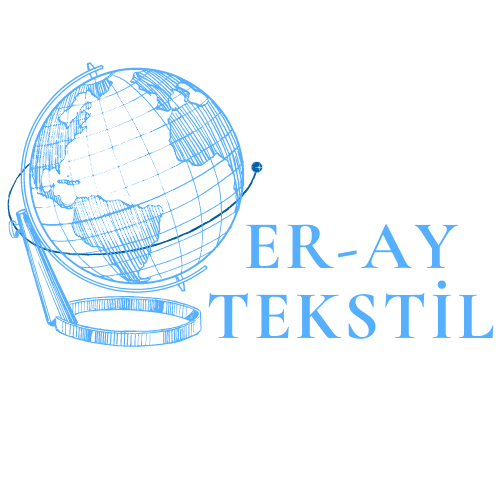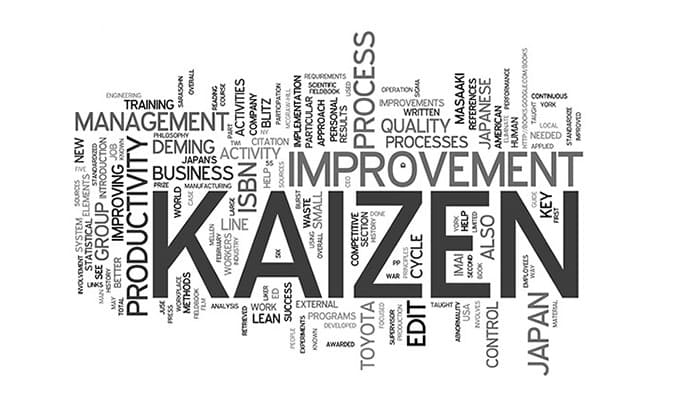Kaizen
Kaizen is a combination of the words kai (change) and zen (better) in Japanese. In its combined form, ”change for the better“ means, in other words, ”Continuous improvement".
It is a life philosophy focused on change, based on constantly improving every aspect of home, work, private and social life with small steps.
Being content with the current situation is Kaizen's main enemy.
It gives the message that a person must constantly strive for change and improvement.
Kaizen is a philosophy that leads people to success in all aspects of life with small but sure steps.
What is the standard?
As a dictionary meaning, the standard has been defined as “a single format that is suitable for certain measures, laws, usage, which can be taken as an example or basis”. In the sense that we are interested in, the standard is the policies, rules, procedures and instructions prepared by the management to ensure that employees repeat their work correctly and reliably. In addition, the spec october used to describe the technical characteristics of products, machines and materials are also a standard.
The standards we use in enterprises;
Let us know what we are dealing with and understand the current situation,
Ensure that the operations are repeated correctly and reliably,
Measuring the processing time and load, how things will be distributed,
To see and understand losses, anomalies, fluctuations, possible problems and problems,
Maintaining the level reached,
Decoupling of information between units,
Ensuring that organizations are properly,
Transfer of individual specialties to the organization,
Accumulation of achievements within the company and ensuring discipline,
It ensures the transfer of experiences to the next generations
The Kaizen technique means developing and maintaining it with small, gradual improvements. Kaizen is a constant challenge to the current standards.
The standards for Kaizen exist only to be replaced by better standards. A permanent improvement can be mentioned only when the next work is performed according to the new standard. Standardization also ensures the dissemination of the gains brought by the improvement within the company. Kaizen has not reached his goal before the spread occurs. Improving standards means creating more advanced standards. Continuous improvement can only be achieved when better standards are established. For this reason, kaizen practitioners believe that standards are inherently temporary and see them as stepping stones used to move standards from one to another with continuous improvement efforts.
If the standards cannot be implemented by employees, the standards should be revised if the actual situation is different. If it is not implemented, the administration should take the necessary measures to ensure discipline.
The standard applies to everyone, it is the duty of management to ensure that everyone works in accordance with and in line with the standards. This is called ’discipline'.
KAIZEN AND INNOVATION
When we look at the improvement methods in companies, we see two different methods, one is gradual progress (kaizen) and the other is sudden progress (innovation) that occurs in the only big step.
Kaizen business standards are developed and maintained with small, gradual improvements. Innovation is the result of large monetary investments in new technologies or tools
it is a radical leap change of the current situation. This change is not kaizen.
Kaizen Innovation
Human priority Technology and money priority
Everyone has a limited number of participants
Small investments, protection-oriented
a lot of effort is invested in the direction of conservation
little effort
Constantly and december regular intervals, its development is uneven
Protection and improvement Scrapping and retrieval
Gradual, permanent, Suddenly, temporary
In slow developing economies in fast developing economies
Kaizen does not exclude innovation, in fact, kaizen and innovation complement each other at some point. Kaizen tries to get the maximum benefit by improving the current situation. But over time, the situation becomes insufficient for the conditions of that day, at which point the eyes should be turned to innovation. The higher the cost of using the latest technology in today's competitive environment, the higher the cost of not applying advanced management techniques. If a company is to continue to exist, it needs both kaizen and innovation.
KAIZEN, PROCESS AND RESULT
Kaizen gives priority to the process, because in order for the results to be good, the processes must first be good. It establishes a bridge between process-induced thinking style, process and result, goals and means, goals and measures, allowing people to look decisively at the whole picture.
For example;
Quality control began with the subsequent inspection of the manufactured products, but improvement in quality cannot be achieved only by inspection. You can achieve quality only by improving production processes.
Successful companies that improve quality in their production processes have now started processing quality into a product while it is still at the design stage. This example explains the relationship between the process and the result very decisively. The task of management is to direct the processes and results. On the one hand, it should be supportive and stimulating for the improvement of processes, and on the other hand, it should control performance and results. A manager who is only interested in the results can not make the right decision, he makes a better decision after studying the indicators that indicate efforts to improve the processes. Because the improvement activities are small, gradual steps and show their effect in the long term. The administration should believe that these efforts will be paid for in the long term.
The process priority criteria are called ”P criteria“ and the result priority criteria are called ”S criteria".
Criteria P are long-term, are aimed at the efforts of employees and often require behavioral changes. The S criteria are direct and short-term.
Criteria P and criteria S can be developed and used at all levels of management. Managers should be interested in the results, but when we look at the managers of successful companies, we often see that they also think process-oriented. They ask questions about the process, take into account both criteria P and criteria S at the decision-making stage. P criteria that they take into account at the decision-making stage;
Discipline Sharing and Participation
Making Good Use of Time
Skill Development
Sharing and Participation
Morale
Communication
If the management uses the process-oriented thinking style appropriately and supports it with the kaizen philosophy, it will see how much the company's competitiveness will increase in the long run.
KAIZEN AND CONDITIONS
The results of the kaizen studies performed must meet the necessary conditions for the following 3 items, if they do not meet, the study performed is not considered a kaizen study.
Quality
Cost
Occupational Safety
Kaizen should not create a negative situation in any of these three. For example, If the cost decreases as a result of the kaizen study performed, but the occupational safety risk occurs or increases the risk, the kaizen study performed is not accepted. If the quality is increasing, but the cost is also increasing, then in this case it is also not considered kaizen.
KAIZEN AND MANAGEMENT
There are two main elements of Kaizen management; Protection is the activities of ensuring that all employees work according to the current current standards, that they are implemented when new standards are created, that their compliance is audited, that they are disseminated and that they are continuous. Improvement is the activities aimed at creating more advanced standards. After further standards are established, it becomes the duty of protection to ensure the implementation of new standards.
Maintaining standards is the duty of employees, and improving it is the duty of management. Operators spend all their time applying the standards. As they begin to learn about their jobs, as they are improved with trainings, as they work in different jobs and their skills increase, they begin to use their intelligence as well as their physical activities. Their interest in improvement works increases, they give suggestions
they'll start. At this point, they begin to properly perform the task of maintaining standards.
Investing in Kaizen means investing in a person, it shows its effect gradually, the results are often not visible to the eye, and the effect is felt in the long run. The management needs to be decisive and patient here.
DUTIES AND RESPONSIBILITIES
SENIOR MANAGEMENT
Kaizen should be determined and patient in the process of the program and allocate enough time for this program. In addition, it should provide the necessary resources and support for training, motivation and other activities during the program process, and kaizen should always make its employees feel the importance it attaches to their work.
After determining the policies and targets, the company should share with the employees which areas it needs improvements in and guide them. Kaizen should appoint team leaders and sponsor kaizen for the designated kaizen issues. The kaizen studies carried out should serve the company's goals.
Kaizen's studies show their results in the long term. By considering the process-oriented as well as the result-oriented, employees should measure the performance of the improvement works they do and give them the necessary time. It should enable engineers to take a greater role in production-related activities.
He should initiate the necessary dec dec strengthen communication between himself and employees and between employees themselves. It should guide and motivate employees by participating in kaizen presentations.
It should take the necessary measures to ensure continuity by monitoring the course and dissemination of the program.
MIDDLE-LEVEL MANAGEMENT
It should ensure that the policies and targets set by senior management are spread to all employees. The company should direct its employees about the issues of kaizen's work to be done and the desired suggestions by determining the goals within the department that will serve the company's goals.
It should be an example for employees using kaizen in the activities it carries out within the department or between departments, and it should instill kaizen dec to employees through trainings.

